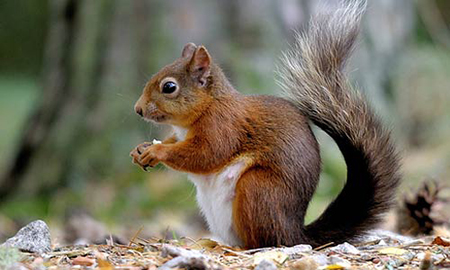 The team identified a red squirrel that recovered naturally from squirrelpox and was released back into the population
The team identified a red squirrel that recovered naturally from squirrelpox and was released back into the population
A study by the University of Liverpool has found that the red squirrel population along the Sefton coastline seems to be recovering from a serious outbreak of squirrelpox in 2008.
Researchers from the University, in collaboration with the Lancashire Wildlife Trust, have been monitoring the red squirrel population at the Seaforth Coastal reserve, which had fallen by 85% as a result of the outbreak.
Squirrel pox is a potentially fatal disease which affects red squirrel populations in some areas of the UK and is thought that to be a significant factor in the decline of the red squirrel population.
Dr Julian Chantrey, from the Institute of Integrative Biology, said: “We have had a unique opportunity to study the dynamics of the squirrelpox disease. So far, our findings indicate that they are recovering from the disease which affected them so severely in 2008.
“There are even indications that a few of the surviving squirrels appear to have antibody to the virus, which would suggest that they have recovered from infection in the past.
“More recently, we have identified a red squirrel that recovered naturally from squirrelpox and was released back into the population.
“However, at this stage, there is insufficient evidence to say whether there is significant resistance in the population as a whole to prevent another pox outbreak.”
The research is supported by NERC and the National Trust Formby.
